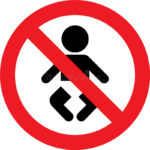For some time I’ve wondered why Pennsylvania hasn’t acquired any Safe Haven Baby Boxes—nicely re-branded now as benevolent-sounding “newborn safety devices/incubators.” The state legislature passed a law authorizing their use in 2017. To hear it from baby box friendlies kanoodling across the interwebs, lawmakers and just plain folks everywhere are chomping to get boxes installed in every firehouse wall they can find, yet the welcoming State of Pennsylvania sits empty with 0 boxes.
Well, now I know why. This was posted on the official Safe Haven Baby Boxes Facebook page Wednesday (June 16) in response to a feature story in the Philadelphia Inquirer about the struggles of Cheryl Edwards, an adopted woman found abandoned as a newborn in 1967.
The Pennsylvania Department of Human Services has no clear way of reporting abandonments versus Safe Surrenders. Department of Health has been dragging its feet for four years on guidelines for the Safe Haven Baby Boxes. The Baby Box bill was passed in 2017 in Pennsylvania.
Now that first complaint is a tad confusing The article says that the Philadelphia Department of Human Services does not have a record-keeping code to separate illegal abandonments from Safe Haven surrenders when compiling stats, How difficult would THAT be to change? Not very! The Pennsylvania Department of Human Services, the article continues, does indeed compile, and between 2002-2020 46 infants have been Safe Havened. Does that include Philly cases? I dunno.
But the big reveal that the state hasn’t come up with “guidelines” for Safe Haven Baby Box use is, well—”interesting.” I hate to take the word of the SHBB organization, but that sounds like a good explanation of why there are no boxes in the state. Could it be that the Pennsylvania Department of Health just ain’t too thrilled about baby boxes?
Pennsylvania, in fact, isn’t the first state that’s not been too thrilled about encouraging its new parents to stuff their inconvenient babies into a deposit-box-in-the-wall. This is 2021, not 1621.
Child welfare officials in Indiana—the baby-stuffing capital of the US—fought hard against the “devices.” In 2015 the state’s Commission on Improving the Status of Children, whose approval by law was needed to legalize baby boxes, nixed the bills and delayed passage for a while. It was unable, though, to shut it down permanently.
The commission cited concerns about cost, potential liability, and fear that boxes would promote abandonment. It suggested a hefted-up traditional Safe Haven program be developed as an alternative. Incredibly, the commission failed to suggest a review of public and private family services. It ignored the roots of baby dumping: poverty, lack of easy and inexpensive access to pre- and post-natal care, domestic violence, substance abuse, and mental health issues.
Backed by the lame but critical commission report, the Indiana Department of Child Services initiated a protracted battle against SHBB and its “pro-life” legislators Eventually lawmakers did a workaround (and here) to force legalization and the game was on. So far, the state has 64 boxes with more on the way that have collected 10 newborns.
Sidenote
In 2014, Indiana suffered one of the highest infant mortality rates in the country: 7.1 per thousand births. On average this meant that an Indiana infant under the age of 1-year died every 13 hours. (Figures are not broken down for neonate deaths or the deaths of those under 30 days of age.) By 2017, when the legislature was arguing with the IDCS about baby boxes, the state had the seventh-highest infant mortality rate in the country, even after funding had increased. Since then the mortality rate have decreased substantially due to an influx of money and programs—not Safe Haven Baby Boxes, no matter what you might hear from across the aisle.
The Indiana Department of Child Services and the Indiana Department of Health refuse to acknowledge Safe Haven Baby Boxes on their website in any substantial way. I can find only one citation on the IDCS website. Two citations appear on the IDOH page. The first is recorded as a discussion point for the IDOH February 20, 2015, Trauma Committee meeting, and the second appears in a four-word phrase in the department’s law-mandated Abortion Informed Consent Brochure. (If more references are on those pages I will be happy to revise citations.)
Most of the state-generated document links once posted online by media sources regarding the dispute have been nuked from the internet and even the Wayback Machine. so I have had to depend on news articles to report the dispute.
Pennsylvania isn’t the only state to balk at boxes. Take a look at Ohio. The Department of Jobs and Family Services ignores them on its Safe Haven information page though they were legalized in the state in 2017 as a late addition to SB 332 a large “infant mortality” bill. A deep dig on the ODJFS page, however, will uncover an information sheet and requirements for “newborn safety incubators” as well as blank forms for location, citation, installation data, box registration, and compliance attestation. Boxes, however, are not advertised.
It’s clear that the SHBBs aren’t much welcomed. A document that I received in a record request from the department a few months ago backs me up. I’d post the document, but I’m loathe to give the SHBB crew a hint of where and what to look for should they care to request their own copy with which to set their rancid pot of bullshit afire. Let’s just say that if ODJFS isn’t required by law to advertise, it won’t. (Ohio currently hosts 4 boxes: Hicksville, Defiance, VanWert, and Sunbury, but no “saves” are reported.)
And let’s not forget Michigan. In 2018 the legislature passed a bill to grant box use, but it was vetoed immediately by traditional Safe Haven supporter and then-Republican Governor Rick Snyder. That bad boy made it clear he wasn’t about to hold his nose and sign a bill he found unnecessary and obnoxious just to be a nice guy. From his veto letter:
I do not believe it is appropriate to allow for parents to surrender a baby by simply depositing the baby into a device, rather than physically handing the baby to a uniformed police, fire or hospital employee.
Since then multiple baby box bills have been introduced in each Michigan legislative session, where they sine die.
The idea of baby boxes in Pennsylvania isn’t exactly a new one. In fact, the state jumped the line.
In February 2000 Time Magazine reported that a Baskets for Babies program was operating in Allegheny County, where rando people placed baskets on their porches hoping an inconvenient newborn would be plopped:
In suburban Pittsburgh, Pa., Gigi Kelly, a nurse and mother, was inspired to begin a local campaign after a healthy 8-lb. baby boy was left in a trash bag behind her family’s church. Kelly found an old laundry basket, lined it with a warm blanket and put it on her front porch. Then she called reporters with a plea for young mothers to bring their babies to her. I’ll take it from there, she promised. Nobody has taken up her offer yet, but still she waits. “It’s a strange feeling when you lay your head on the pillow at night,” she says. “Kind of spooky.” With only a manual typewriter and a fax machine, she turned her Baskets for Babies program into a public-awareness campaign for young moms who think they have nowhere to turn. Now when night falls on Pittsburgh, 608 families leave their porch lights on and have their baskets ready.
A few months later, the Pittsburgh Post-Express reported that none of the 600+ baskets had yet to be claimed by a Little Wanderer.
How disappointing it must have been to wake up bright, bushy-tailed, and hopeful each morning only to find an empty basket except for an occasional cat taking in a morning sunbeam.
Kelly also tried to convince the Pittsburgh City Council to place baby baskets in fire stations. The plan flopped when city lawmakers and the police chief whinged about liability issues and questioned if the plan didn’t, in fact, encourage abandonment.
Back then, politicians, at least in Pittsburgh, weren’t fueled by performative moral panic and drastic solutions for barely existing problems. Today anything goes.
First published in The Daily Bastardette on June 22, 2021



Leave a Reply